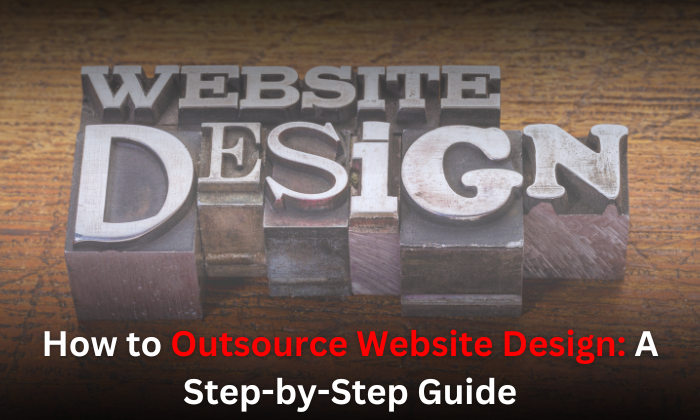Outsourcing website design has become a cost-effective and efficient solution for businesses looking to create or revamp their online presence. By working with professional web designers, companies can save time, reduce costs, and access a broader talent pool.
This guide provides a step-by-step process on how to outsource website design effectively:
Why Outsource Website Design?
Outsourcing web design offers several advantages, including affordability, expertise, and faster project completion. Many companies choose to work with website designers in India and other outsourcing hubs due to their competitive pricing and high-quality work.
Key Benefits of Outsourcing Web Design:
- Cost Savings: Hiring an in-house designer can be expensive, whereas outsourcing allows businesses to work with top talent at a fraction of the cost.
- Access to Expertise: Professional web designers bring experience and technical know-how that ensure a high-quality outcome.
- Scalability: Companies can easily scale up or down depending on project needs without long-term commitments.
- Time Efficiency: Experienced designers can complete projects faster than an in-house team with limited resources.
Defining Your Website Requirements
Before you outsource website design, it’s crucial to have a clear vision and requirements. Outline the website’s purpose, functionality, and design preferences to ensure that you find the right professionals for the job.
Website Type and Functionality
Determine whether your website is an e-commerce platform, a blog, or a corporate website. Understanding the purpose of the website helps define the necessary features and layout.
Budget and Design Preferences
Establish a budget that aligns with your project scope. Providing references and specific styles will help designers understand your vision and expectations.
Finding the Right Web Design Agency or Freelancer
There are numerous platforms where you can find talented website designers. Whether you’re looking for a freelancer or an agency, ensure they align with your project scope and budget.
Where to Find Web Designers
Platforms like Invedus, Fiverr, Freelancer and Dribbble showcase a variety of web designers with different skill levels and expertise.
Assessing Skills and Expertise
Review portfolios to evaluate design creativity and technical skills. Prior client testimonials and ratings can also provide insight into a designer’s reliability and professionalism.
Evaluating and Shortlisting Designers
Once you shortlist candidates, it’s essential to vet their expertise to ensure they meet your expectations.
Technical Competency
Ensure the designer is proficient in technologies such as HTML, CSS, JavaScript, WordPress, and responsive design principles. This ensures the website functions smoothly across all devices.
Communication and Work Ethics
Clear communication is critical in any outsourced project. Ensure the designer understands your vision, responds promptly, and maintains transparency in timelines and pricing.
Setting Project Expectations and Scope
Once you have selected a designer, it’s crucial to discuss project expectations in detail to avoid misunderstandings.
Timeline and Milestones
Establish deadlines for different phases of the project, such as wireframing, development, testing, and launch. Setting realistic expectations helps prevent delays.
Feedback and Revisions
Discuss the number of revision rounds included in the contract. Regular feedback ensures the design meets your expectations before finalization.
Managing the Project Effectively
Once the project begins, stay involved to ensure the work aligns with your vision. Regular updates and feedback loops help streamline the process.
Using Collaboration Tools
Tools like Trello, Asana, and Slack allow seamless communication and project tracking, ensuring everyone remains aligned with project goals.
Conducting Regular Check-ins
Weekly or bi-weekly check-ins help track progress, address concerns, and maintain the project timeline.
Finalizing and Launching the Website
Once the design is complete, thoroughly review the website before launch. Test all features and functionalities to ensure smooth performance.
Pre-Launch Testing and Optimization
Test the website on multiple browsers and devices to ensure compatibility. Implement SEO best practices such as meta tags, alt text, and keyword optimization to improve search rankings.
Ensuring Security and Performance
Secure the website with an SSL certificate, data encryption, and performance optimization to enhance user experience and safeguard data.
Avoiding Common Mistakes in Outsourcing Web Design
While outsourcing is a great strategy, some mistakes can lead to costly setbacks. Avoid these common pitfalls:
Lack of Clear Communication
Misunderstandings regarding project scope, timeline, or design preferences can lead to unnecessary delays.
Ignoring Contracts and Agreements
Always have a detailed written agreement outlining the scope of work, payment terms, and deadlines to prevent disputes.
Focusing Solely on Cost
While affordability is a key benefit of outsourcing, compromising on quality for lower costs can negatively impact your website’s performance.
Final Thoughts
To successfully outsource website design, businesses must be strategic in their approach. By defining requirements, finding the right professionals, and maintaining clear communication, companies can ensure a seamless and cost-effective website development process.
To Read More Articles Explore This Site – https://insidetechie.blog/
 :
https://www.pinterest.com/inveduss/
:
https://www.pinterest.com/inveduss/












